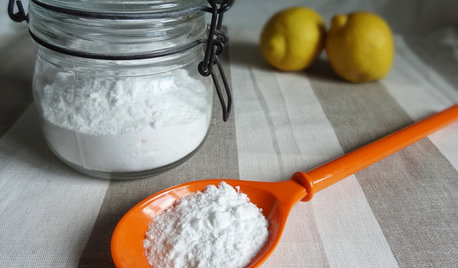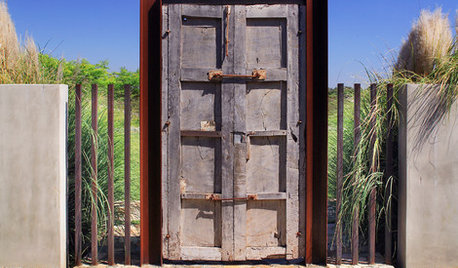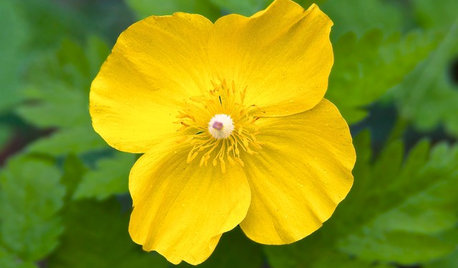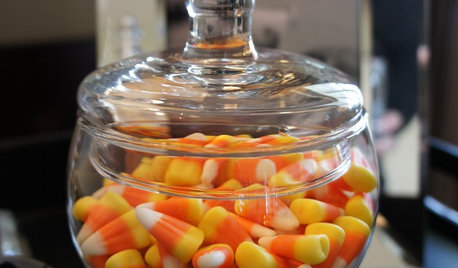Are all yellow beans wax beans?
I have come across many retail seed sources that use the term (yellow bean) in some descriptions and (wax bean) in other descriptions. I was wondering if there is a difference, if the terms are interchangeable, or maybe they are simply not being consistent when writing their descriptions. This got me to thinking about the whole yellow bean classification.
I have come across yellow variants of bean types such as Romano, Greasy, French Filet, Yellow Bush Snap (as opposed to Bush Wax), Yellow Pole Snap (as opposed to Pole Wax) beans, etc. that I assume are not classified as wax beans. But if I were to go by the definitions I have found via internet search then all those yellow variants I listed previously are wax beans. I find this hard to believe when one compares some of these beans (like Yellow Romano and Yellow Greasy) to classic wax beans like Cherokee, Pencil Pod, etc. Different flavors, textures, appearances, etc.
If there are different types of yellow beans then how does one know when a certain yellow bean should be in the category of a yellow variant of a type or in the category of wax beans? Some would be easy, such as specifying a Yellow Greasy as opposed to a Wax Greasy (which I have never heard of). Others could be a bit more difficult to classify.
I am working on a comprehensive listing of types, varieties, and strains and have found this to be very confusing. Any clarification would be much appreciated. Thanks in advance.
-Tom
Comments (32)
zeedman Zone 5 Wisconsin
13 years agolast modified: 9 years agoSince I grow & collect many yellow-podded beans, this is a question I too have been considering. Is the term "wax", as presently applied in common usage, wrong? Has a term originally used to describe a specific bean (or class of beans) now been over-generalized?
In answer, absent information to the contrary, I concur with Farmerdill's comments. Whether the original yellow "wax" bean was waxy or not, the term now appears to be generally inclusive of any yellow-podded snap bean. Will Weaver is a food historian, and he defines wax beans in his book Heirloom Vegetable Gardening as "...any sort with pods that ripen yellow".
The answer to this question may be more than academic, since I have seen some yellow-podded beans listed in the SSE Yearbook as common snaps, when there are separate categories for "wax" beans. Interestingly, there is no separate category for purple-podded beans, which are also mixed in with the snap beans. IMO pod color is only an arbitrary way to classify beans, since it applies to no particular group of related traits, other than visual appearance.
Related Professionals
Manchester Landscape Contractors · Marlborough Landscape Contractors · Mesa Landscape Contractors · Middleton Landscape Contractors · Pompano Beach Landscape Contractors · Santa Ana Landscape Contractors · Seminole Landscape Contractors · Wheat Ridge Landscape Contractors · Austin Decks, Patios & Outdoor Enclosures · Brentwood Decks, Patios & Outdoor Enclosures · Dedham Decks, Patios & Outdoor Enclosures · Frisco Decks, Patios & Outdoor Enclosures · Lake Morton-Berrydale Decks, Patios & Outdoor Enclosures · Oak Ridge Decks, Patios & Outdoor Enclosures · Spokane Decks, Patios & Outdoor Enclosuressoilent_green
Original Author13 years agolast modified: 9 years agoThanks for the responses. So the simplest way to classify would be to state them all as yellow beans and drop the term "wax" unless the word is used in the name, such as "Golden Wax", etc. That would solve all the issues and simplify quite a bit. So for example the category "Bush Snap Beans" would have subheadings of "Green", "Purple", "Yellow", "Red", "BiColor", etc. Does this make sense?
There is still a dilemma which I suspected all along. farmerdill - you stated "True wax bean types actually do have a waxy texture and feel." I agree and I would also add they have a different flavor and texture when cooked or processed than any other bean types (and are my favorite hands down for these reasons). So if I knew with certainty which varieties are true wax types I could/should classify them in their own separate category maybe called "True Wax Beans". IMHO I would consider "Cherokee", "Brittle Wax", "Golden Wax", "Kinghorn", "Pencil Pod", etc. to be true wax types but I base this only on their waxy appearance, somewhat translucent flesh when mature, and how they cook, process, and taste. How does one go about finding with certainty which varieties are actually true wax types or are descendants of true wax types? Or is this simply not possible anymore so I should just put everything into the "yellow bean" category?
Lumping distinct types into one category just for the sake of convenience really bugs me. I know it sounds like I am going overboard - I admit I am a bit of a perfectionist and I would really like to get things right. What is the point in trying to make a comprehensive list if it is going to be inherently inaccurate.
Thanks again to farmerdill and zeedman for your helpful, informative replies.
-Tomfarmerdill
13 years agolast modified: 9 years agoI have never learned to like wax beans. The taste and texture just does not appeal to me. On the other hand the purple beans are different from the green snap beans only in appearance. Once cooked they are a green bean. ditto for most of the striped beans. I am an old man, so I have spent most of my life with the two categories of snap beans green and wax. The "yellow" nomenclature came into being with the "heirloom" movement. Like many other familiar terms, each generation makes changes, and old words/names become archaic. In the late 19th century there were also white snap beans like Crystal White Wax, Ivory Pod Wax and White Zulu which were classified as wax beans.
I like to think they use the term wax because of the taste and texture.bigkemt
13 years agolast modified: 9 years agoI am a new around these parts. I have a question and I think that you may be able to answer it . I am looking for what is best described as a yellow (green bean). I know it is heirloom and it was from my great grandfather(I am 24). I have not seen these seed or beans in a long time (10+years) I know they were climbing beans, yellow and that dad put them in The best cold bean salad. Neither he or great grandpa ever said any thing about them being a "wax bean". Dad confirmed that he did not think they were the "wax" beans. I am looking for possibly a few names of the plant, I can throw out to my father to jog his memory and maybe get his favourite bean/ plant back. I thank you for any help you may have.
zeedman Zone 5 Wisconsin
13 years agolast modified: 9 years agoBigkemt, it's hard to identify a bean just by a description... or even from a photo, for that matter. Seed color might help narrow it down, but even then there are likely to be several possibilities.
soilent_green
Original Author13 years agolast modified: 9 years agozeedman stated, "IMO pod color is only an arbitrary way to classify beans, since it applies to no particular group of related traits, other than visual appearance.
I agree but snap bean color is what most ordinary folks understand and go by. I think it is an intuitive albeit arbitrary approach to bring order to a list. Plus division by color is how most commercial seed catalogs order their bean pages so people are used to seeing seed lists done in this manner.
If I may expound:
I am working on a non-scientific comprehensive list of bean varieties for the benefit of me, bean fanatics (like me), vegetable and hobby gardeners, seed savers, heirloom seed organizations and businesses, and most importantly for the benefit of the heirloom seed varieties (increased demand for obscure varieties as more people are educated and made aware of their existence, thus helping to protect their existence by sheer numbers as well as by them being planted in as many regions as possible). I am hoping this can be my small contribution to the heirloom seed saving and growing movement.One or two people growing a rare variety simply to perpetuate it is very noble but scares the heck out of me. That means that some varieties are one tornado, one drought, one flood, one early frost, etc. away from possible extinction. An effort needs to be made to make it easier to educate and spark interest in as many people as possible to acquire and plant rare or uncommon varieties. This is kind of my personal mission statement for making a comprehensive, easy to understand, plain english list of beans for the masses. Minimal scientific or academic gobbledygook that most people do not care about anyway. My goal is to have my bean website become THE website to go to regarding information about bean types, varieties, strains, etc. I would love if that happened.
I constantly hear or read comments like "I have never seen purple beans before." or "I never heard of that variety" or "I did not know I could grow them in my location" or "Is seed available for this variety?", etc. Statements like that tell me a comprehensive list of historical and currently available bean varieties could be of value. The problem is that I did not realize this list would be such an enormous undertaking consuming vastly more time than I expected. I only have time to work on the project in the winter months, but it has been fun and seeing it through to completion is becoming a quest. When largely "completed" (I know it will never be due to inadvertent errors and omissions) I intend on posting the list online on its own website for anyone to access, so I am designing and coding the website as well. Back in February I created a scripting program that is now data mining the internet to collect bean variety information and place it in a database. If it works properly it should save a lot of time for me and hopefully make the project go a bit quicker.
farmerdill stated, "On the other hand the purple beans are different from the green snap beans only in appearance."
I have a friend and a sister who now only grow purple bush beans. Both swear they taste better and have a better texture than any green bush bean variety either have ever grown. Some folks feel pole beans taste better than bush beans. You do not prefer wax beans, I do. I find people's bean preferences interesting - just one of the reasons beans have gone from an old garden regular to an obsessive hobby for me.
And for the record I did not know there were such things as white wax beans until farmerdill mentioned them above. One new category and three new variety names to add to my list. Kinda reinforces my reasons for making a comprehensive list.
BTW I sent bigkemt a list of yellow/wax pole bean variety names to get him started (I still do not know what to call the darn things). :-)
Sorry for the length - brevity is not my forte.
Regards,
-Tomremy_gw
13 years agolast modified: 9 years agoThe term wax when referring to beans has only to do with the color and how they looked and nothing to do with how they felt. When a bean was smooth or waxy to the touch, it was described as greasy. "Wax" was at one time used to describe a translucent looking light yellow or white. It has now become synonymous with any bean with yellow coloration including more deeply hued variations.
In my 1865 'Field and Garden Vegetables of America, there is a variety named Wax Bean aka Indian Chief. The description says this, "green at first, but soon change to a fine, waxen, semi-transparent cream-white." On this link below is a page from 'The Agriculturist' from 1886. In the left column is a description for a Giant Wax bean which says,"pale yellow color and waxy appearance."
RemyHere is a link that might be useful: Page with Giant Wax Bean Description
mrdoitall
13 years agolast modified: 9 years agobigkemt, Here are some yellow pole beans that I know of.
Gold of Bacau
Neckargold
Goldmarie vining bean
Kentucky Wonder wax pole bean
Marvel of Venicehappyday
13 years agolast modified: 9 years agoThere's a white podded bean? I've never seen a white podded bean. Anybody have seed of it?
zeedman Zone 5 Wisconsin
13 years agolast modified: 9 years agoA brief departure OT, but I'll come back to it.
Soilent_green stated: "One or two people growing a rare variety simply to perpetuate it is very noble but scares the heck out of me. That means that some varieties are one tornado, one drought, one flood, one early frost, etc. away from possible extinction. An effort needs to be made to make it easier to educate and spark interest in as many people as possible to acquire and plant rare or uncommon varieties."
You will find, Tom, that many here share that view. I myself became a seed saver & preservationist so I could be "one more" backup to others' collections. And it has already payed off several times, where the original source for one of the varieties I maintain lost all of their seed, and requested some back from me.
There are many members of the Seed Savers Exchange here, as well as members of Seeds of Diversity/Canada and the HDRA. All of those are organizations dedicated to the preservation of our garden heritage. The USDA & other germplasm collections throughout the world preserve countless varieties also, but their holdings are less accessible to the public.
SSE has an enormous collection, which is backed up at different sites... so if a variety is held by them, it is pretty much safe from physical calamity. However, SSE does not preserve all of the heirlooms offered by its members. Sometimes members drop out, taking with them varieties available nowhere else. The same thing happens when seed companies fold, or when they are bought out & drop OP varieties in favor of hybrids. And some family heirlooms never pass into the public domain, and perish when the families that once grew them no longer do so.
The sad truth is, they just can't all be saved. All we can do as preservationists is to save them one at a time, and network with others of like mind.
Soilent_green stated: "I am working on a non-scientific comprehensive list of bean varieties for the benefit of me, bean fanatics (like me), vegetable and hobby gardeners, seed savers, heirloom seed organizations and businesses, and most importantly for the benefit of the heirloom seed varieties (increased demand for obscure varieties as more people are educated and made aware of their existence, thus helping to protect their existence by sheer numbers as well as by them being planted in as many regions as possible). I am hoping this can be my small contribution to the heirloom seed saving and growing movement."
That could prove to be a monumental undertaking. Extensive lists have already been compiled from several sources. The SSE Yearbook would be a great start, since it currently lists about 1500 varieties. The online version has even more, since it lists varieties which have been recently dropped. There is the list compiled by the late John Withee, but since he gave his collection to SSE, that might be redundant. Extensive lists of beans can also be found on other forums, which shall here be nameless. Then there is the Pandora's box which is GRIN... which I believe, Tom, you have already opened. Be very afraid. ;-) Look into PC-GRIN, if you have not already.
All of those are great starting points; if you can data mine them, much of your work has already been done. Then its just a matter of eliminating redundancies, and adding listings from other sources. Still an enormous task.
And now back to our regularly scheduled topic. ;-)
Here's another "white" wax variety: "Ice Bean" (a.k.a. "Crystal White Wax"). Will Weaver describes it in his book, including a photo. The pods are a very light greenish white. There is an "Ice" bean offered in the SSE Yearbook this year which may be the same bean. Weaver also mentions that a variety called "Speckbohne" is visually indistinguishable from his "Ice Bean". Not sure where Mr. Weaver offers seed from his collection now, since he no longer lists with SSE.
jimster
13 years agolast modified: 9 years ago"That could prove to be a monumental undertaking."
True. And Tom may be the one who achieves it.
Jim
soilent_green
Original Author13 years agolast modified: 9 years agoIt has been my observation that the bean forum does not get a huge amount of traffic. As such I figure we can change the topic to the larger discussions we are having rather than posting a new topic. Of course responses to the original question are still appreciated. Thanks to all for including themselves by posting - I have enjoyed it so far and I especially appreciate the input from the GW "legends".
I believe my quest to be a complicated task, but doable. The problem is not the sheer quantity of types, varieties, and strains. That does not intimidate me - it simply equates to a lot of computer "screen time" and very little brain work.
There are three main problems that I am having and would appreciate any input or suggestions:
Problem #1: How to properly deal with the "a.k.a." issue. Lots of confusion and duplicity out there. I am listing any alternative name I come across that a variety goes by or has gone by in the past. But which name is the most common name that it should be listed under and which are the a.k.a.'s? Or should it be listed under every name it is known as? (I feel the latter method would get VERY confusing for the site user so I do not care for this option.)
Problem #2: Where to list a variety that has multiple uses. For example a bean that is commonly harvested for use as a snap bean, as a shell bean, and as a dry bean or a combination of any of those three. I decided to list a variety in every category that applies to it rather than listing it in the category in which it is most often harvested for consumption (that became a judgement call in many situations so became unacceptable). I do not feel my chosen solution will confuse the site user because he/she will be only be able to access one category at any given time on the site.
Problem #3: Most minor of the three. How to correctly label the categories and include all a.k.a.'s for the categories as well. The reason for the original post.
The first two problems got confusing enough that I went back to the old methods and I started to whiteboard the project. I am going to need more whiteboards...
I have not counted lately but I would guesstimate that I have approximately 500 varieties listed completely and properly - many with images of the snap beans and/or the dry seed beans, and links to retail seed companies and organizations that currently offer the seed for sale. Regarding images: Obviously there are copyright issues with many of the images I used, so they are being used simply to test and design the concept at this time. An important issue but farther down on the "needs to be addressed" list. Regarding links: At some point a company would have to pay for the right to have a link on my bean site or theirs would be removed (standard practice on many web sites for generating revenue). This would hopefully generate revenue for site maintenance costs. At this time I tentatively plan on free links for organizations I believe in and support such as SSE - this would be my contribution to their efforts and hopefully increase sales and membership numbers for them.
So, 500 so far. I know, I know - I still got a looong way to go... :-)
Zeedman, thanks for your last post. You gave me some leads I will research asap. Any other leads for online resources to gather bean variety info from any other posters would be much appreciated.
-Tom
Ispahan Zone6a Chicago
13 years agolast modified: 9 years agoZeedman, I think there is a PA WE W listing with SSE this year. Could this be the same person?
aftermidnight Zone7b B.C. Canada
13 years agolast modified: 9 years ago"Speckbohne", aka Little White Ice?
Annette
deanriowa
13 years agolast modified: 9 years ago"Speckbohne, aka Little White"
Stop it! Another bean I have to grow sometime. ;)
I didn't realize Mr. Weaver had written, so many books. I may have to pickup a couple. Zeedman can you recommend any?
soilent_green, I like your idea of documenting beans. I have a couple of ideas that might help solve your questions. If you would like to contact me offline, that would be great. Send me an email from my profile here on GW, when you have some time.
My favorite wax bean to date is the bush - snap - Cherokee Wax.thanks,
Dean
Macmex
13 years agolast modified: 9 years agoMy wife and I grow a yellow pole bean, which we inherited from her grandparents back around 1983. Been offering through the SSE since 1984. But really, only in recent years have some apparently adopted it, to reoffer. It's called Barksdale Wax Pole Bean and was raised at least since the 1950s in and around Salem, IL. Under the right conditions (mainly cool, somewhat humid nights) it can produce like gang busters. But here in OK I grow it mainly as a labor of love and our family tradition. Pods are 8" long and 1" wide (flat), stringless and tender till they dry down.
I suspect Barksdale will always be rare. Only some growers in NY State have consistently reported great results. My seed supply is extremely low this year, as 2010 was a flop.
George
Tahlequah, OKsoilent_green
Original Author13 years agolast modified: 9 years agoWhite wax bean info:
Comment:
I wonder if "Speckbohne" is a correct a.k.a for Crystal White Wax. The word seems to mean a classic German dish comprised of bacon and snap beans.Trivia:
For the record, it is my understanding that "Stangenbohnen" is German for "pole beans" or "runner beans".Some General Info:
"Wax Bean (Crystal White Wax Bean): Hybridized by Dutch plant breeders, wax beans were first grown in England as a forcing bean for hothouses. Also called ice bean, this is a light green to white variety of green or snap bean that tends to be a little tougher, more like an old-fashioned green bean variety. Heirloom varieties have a string running the length of their pods, which must be removed before cooking." Source: "Beans" by Aliza GreenVariety "Duluth":
"Duluth - Breeder: University of Minnesota, Saint Paul. Parentage: Refugee x Crystal White Wax. Characteristics: white pod color. This cultivar was never adopted by seed trade and is no longer in existence. Similar: Refugee. Minnesota Hort. 67: 65, 1939." Source: http://cuke.hort.ncsu.edu/cucurbit/index.htmlPossible White Wax Bean Seed Source:
Ice Bean SeedsBeing that we now know of white wax bean varieties, I wonder if I can label categories as "Yellow Snap", "Yellow Pole Snap", "Yellow Wax"","Yellow Pole Wax", "White Wax", etc. I know it goes against the accepted nomenclature, but this would probably be the easiest for folks to understand. Only catch is trying to separate the yellows from the waxes.
-Tom
crnagora95
13 years agolast modified: 9 years agoJust a thought:
Seeing as before petroleum and soy based waxes were developed, people used tallow and beeswax candles (mostly), could the colors of these waxes be what they used to describe the yellow/wax beans? I have seen and made tallow candles before and sometimes they end up with a light yellowish color, and beeswax is yellowish-brownish.
Otherwise, the name could have been a mistranslation from the cultures that introduced Americans to wax beans. No, never mind, beans are native to America. But did the American Indians grow wax beans? Or were green beans sent back to the Old World and color mutations and selective breeding result in wax beans?
zeedman Zone 5 Wisconsin
13 years agolast modified: 9 years agoThat sounds like a plausible explanation for the term "wax bean".
About that white wax... sorry Dean, didn't mean to (further) complicate your garden plan. ;-) And Will Weaver didn't state that "Crystal White Wax" = "Speckbohne", merely that the two varieties were visually indistinguishable.
bigkemt
13 years agolast modified: 9 years agofor the people that helped me to figure out some ideas. I have asked family and friends with much debate noone came up with a name. I am starting with Kentucky Wonder wax pole bean. I will let you know what my father says at the end of the season. Thank you for the help and support in my gardening indever.
zeedman Zone 5 Wisconsin
12 years agolast modified: 9 years agoI'm glad Fusion linked to this on a more recent thread, it reminded me to follow up on Soilent_green's project. Tom, you still out there? Could you give us an update?
soilent_green
Original Author12 years agolast modified: 9 years agoHi zeedman, hope everything is going well with you. Thanks again for the two kinds of "MN" cowpeas, they did wonderfully even with the bad growing season we had here.
My project is making slow progress. I have more raw data to go through than I have time available. Much bigger project than I anticipated (as is usual for me). I thought it would be safer to have all my hard work on an offline computer so I acquired a second one that is dedicated just to the project. I linked a database to a spreadsheet. I settled on using the database for general information and I give every variety its own number. That number is referenced on the spreadsheet for further details and information. The spreadsheet offers a quick side-by-side comparison of varieties by using category checkmarks. Works pretty good. The thing is, the more time I spend and the more knowledge I acquire, the more obsessed I become. Beans sure are fascinating.
A big problem is categorizing because of all the different terminologies and because many beans have multiple uses. The yellow/wax was one small issue, but there are more such as Romano beans versus flat beans, Lima (and Fava?) versus broad beans, French beans and filet beans, horticulturals and shellies, etc. Are cornfield beans distinctly different from typical pole beans or just regional terms for the same thing? Why are runner beans varieties of Phaseolus coccineus but 1/2 runner beans are varieties of Phaseolus vulgaris? That kind of confusing stuff. I am having to constantly go back into my "finished" data and correct errors or update information. Two steps forward, one step back.
Second big problem is that I wanted a photo of each variety with beans set on as well as a photo of the dry seed beans. Not going to happen in my lifetime. ;-) Was such a distraction and time-killer that I dropped the whole idea for now.
All in all I would say I am generally making progress, considering I only have time to work on it in the winter. I am a lot farther along now than when I last posted on this thread, but have a long way to go. I branched out into greasies, cutshorts, fall beans, teparies, tropical and subtropical beans, asian beans, foreign varieties available commercially, extinct varieties, etc. I also am working on cowpeas and soybeans just because I am so interested in them. When I get frustrated with the snap and dry beans I work on these categories instead.
The biggest eye opener by far is how much duplicity is out there. I am convinced a great many varieties are actually the same ones with different names. I have come across seed companies and even growers and market sellers that arbitrarily change the names for selling purposes.
Heck, I am even guilty. I got some bean seeds in a trade and the woman, an immigrant from eastern Europe, didn't know what they were so I named them after the nearest towns they came from in her homeland. What am I to do, call them "Unknown 1" and "Unknown 2" forever? I don't think what I did is quite as bad as changing a name to make a variety sound "cute" or make them more marketable, but the end result is confusion just the same.
Finally, I hate to sound greedy, but I think this project may be worthy of publishing if I can get it finished, rather than free-sourcing it on the web. Several people I have shown it to have suggested looking into that possibility. Wasn't my original intention but because it is so complex I now feel I should try to get some kind of return on my investment of time and energy, if possible. This is nowhere on the priority lists, though, and if it ultimately doesn't happen it is no big deal to me.
My personal collection is growing. With this year's orders and trades I am at well over 100 varieties of bush and pole snap and dry beans, asian beans, cowpeas, and soybeans. We have an informal little local club of hobby growers that are all interested in these so we coordinate and plant different varieties and swap seeds with each other. Pretty fun.
Take care,
-TomI know it is improper to ask - wrong forum, wrong thread - but if anyone has any white wax beans would you be willing to part with a few seeds? I really want to acquire some. Thanks much.
franked1
12 years agolast modified: 9 years agoA little off topic-I'm looking for a source for the Refugee green bean, Thanks Frank
fusion_power
12 years agolast modified: 9 years agoFrank, google is your friend. If you google "refugee bean" you will find 3 or 4 sources in the top 20 links.
http://www.heritageharvestseed.com/beansrs.html
DarJones
rdback
12 years agolast modified: 9 years agoDarryl,
Around Feb 1st, Heritage Harvest announced they no longer ship to the U.S., which is a real shame. Great company to deal with and excellent varieties to choose from.
Just an fyi.
Rick
NancyWriter
10 years agolast modified: 9 years agoDear friends! Flip side of the question: Are all wax beans yellow (or purple)? Tonight in a happening Manhattan restaurant I was served a wax bean salad....& I protested because the beans, haricots from the look of them, were green. I was told because they were heirloom beans they were green. Back home, I googled wax beans & found no image or definition that included green. What do you experts say? By the way, for me the defining & thrilling characteristic of wax beans is that they audibly squeak when you bite into them. Aren't they wonderful?
soilent_green
Original Author10 years agolast modified: 9 years agoNancyWriter - "Tonight in a happening Manhattan restaurant I was served a wax bean salad....& I protested because the beans, haricots from the look of them, were green. I was told because they were heirloom beans they were green."
I must be missing something because that answer doesn't even make sense to me. Was the server claiming that all heirloom beans are green? (Wrong.) Was the server claiming that all heirloom wax beans are green? (Wrong again.) Did the item on the menu even claim to be an "heirloom" wax bean salad? Why did the server even bring up the heirloom issue?
The server never answered your question. Sounds like he/she was BSing his/her way through this discussion. I dislike people who do not have the courage to simply admit that they do not know the correct answer to a question.
I also admit that I am getting sick and tired of the term "heirloom". That term, along with the word "organic", have been usurped by hucksters and charlatans and have become gimmicky catchphrases used for the simple purpose of removing people of more of their hard-earned money. Though I catch myself occasionally, I try very hard not to use either of those terms anymore.
As you, I like the squeak too. The translucent appearance of both fresh and cooked yellow wax beans is an unmistakable identifier to me of an authentic wax bean. I love 'em. The purple (if in fact they are true wax types) are o.k., the old white varieties are fine, but to me a true wax bean will always be yellow.
I would not be a bit surprised to hear that green "wax" varieties are or will someday be available. The definitive vegetable lines of the past are constantly being blurred these days. More novelty than anything else, I rarely find any improvement in flavor (or disease resistance as is often claimed). I am sticking with the classics, can't beat them as far as I am concerned.
Have a good day,
-TomNancyWriter
10 years agolast modified: 9 years agoHi Tom & thanks for a thoughtful answer. Yup, heirloom & organic are used loosely indeed & often--as in this case--to make someone feel silly for having questioned quality. The sever (& his manager) hushed me by suggesting I had foolishly, ignorantly, failed to recognize the green beans as wax beans because I'm not hip to all the wax bean varietals. Indeed I'm not. But, as I wrote in my post, & I've done more searching since writing it, nothing identified as a wax bean remotely resembles the yummy haricots (but no yellow, no squeak) on my plate. I'm a former chef & caterer & I think of menus, like labels, as being a sacred contract between seller & buyer. Tell it like it is, right? All best, & craving wax beans, Nancy
tormato
10 years agolast modified: 9 years agoAre all wax beans yellow? The answer may be yes and no.
I have a pink "wax" bean. It is a mix of pink and yellow colored pods early in the picking season, and is almost entirely pink late in the picking season. The pods turn yellow when cooked. So, if you cook them, yes, all wax beans are yellow. And, if you don't cook them, the answer is no.
Gary
















farmerdill